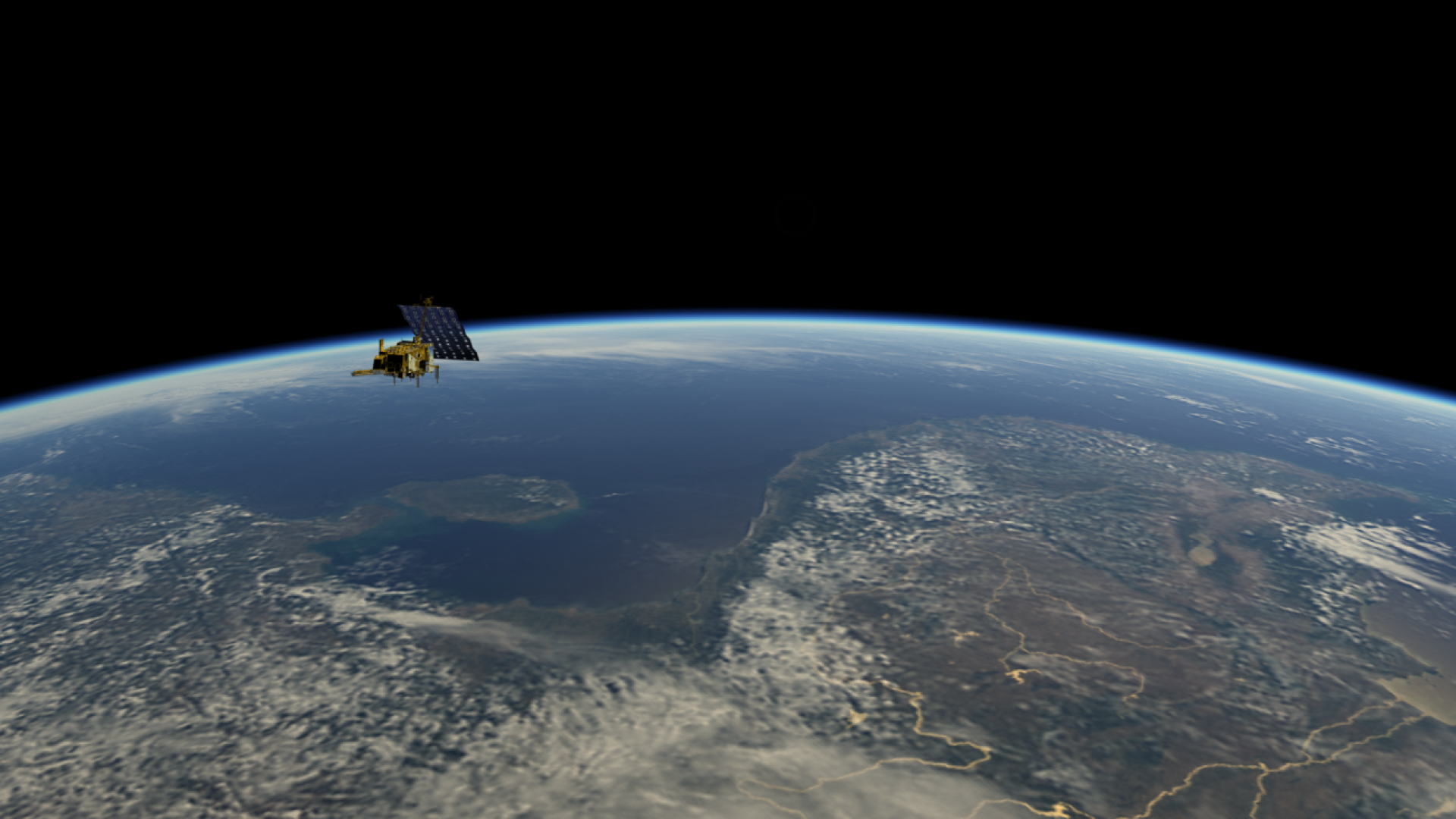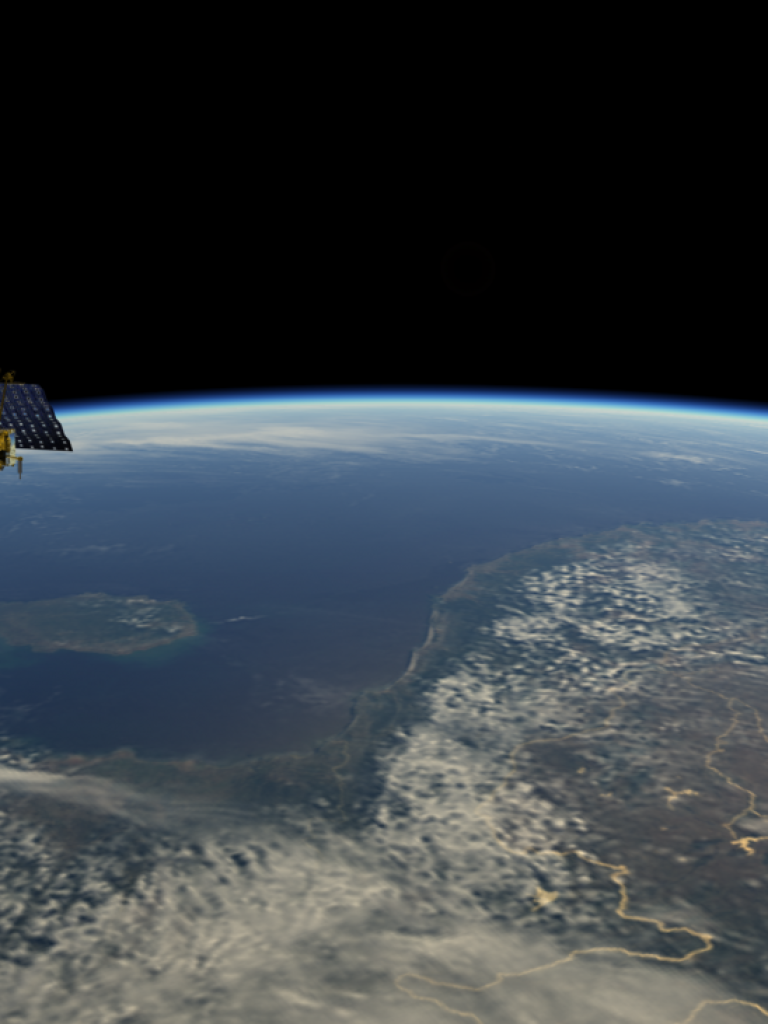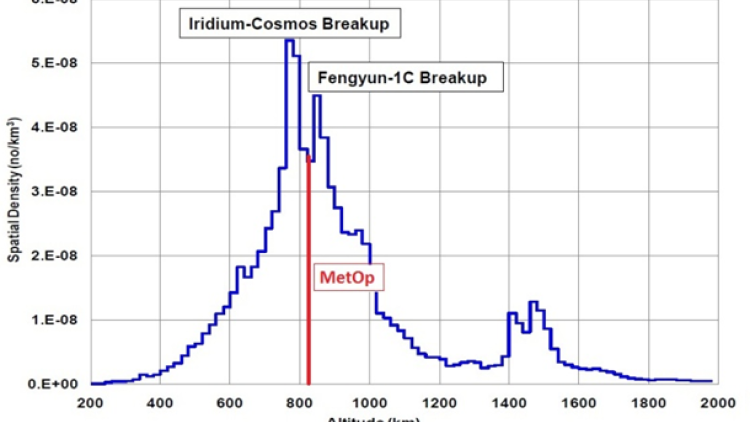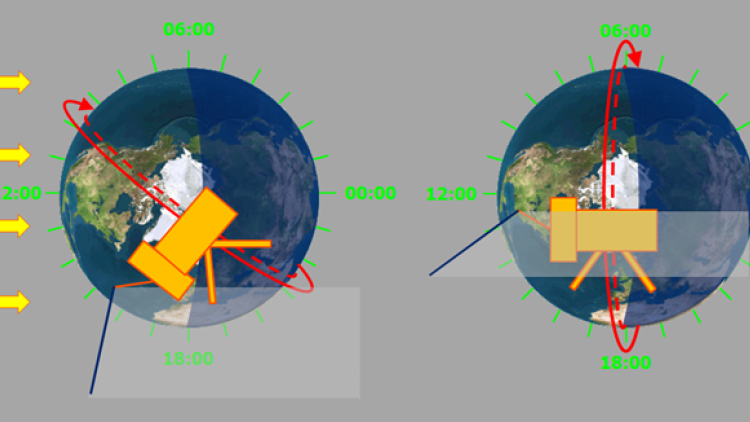
Extending the working lifetime of the Metop-A weather satellite
What factors limit the lifetime of Metop-A?


This autumn, EUMETSAT will allow Metop-A to start drifting from its normal orbit to extend its lifetime for an additional four years.
01 November 2023
07 June 2017
The Metop satellites fly in a sun-synchronous orbit which crosses the equator at a local time of 21:30 when it’s travelling from south to north.

This is called the local time of the ascending node, or LTAN. It is important that the satellite crosses the Equator at the same time on its ascending orbit, so that it can make consistent measurements. The LTAN determines the angle between Metop and the Sun, which in turn affects many aspects of Metop’s design. This includes the angle of the solar panels and how they can rotate, the location of radiators on the outside of the satellite, and even the way the instruments are positioned on the spacecraft.
Metop is only designed to work within 15 minutes of this LTAN and most of its fuel is used to fine tune the orbital inclination so that the non-spherical Earth causes the orbit to rotate at just under 1 degree per day and maintain the same LTAN through the year as the Earth orbits the Sun. Without maintaining the inclination, Metop-A will start to cross the Equator at an earlier time – very slowly at first, but constantly accelerating.

Metop’s operational altitude sits in the densest debris region where orbital lifetimes are of the order 100’s of years.[/caption] Metop-A still has over half its original 300 kg of fuel remaining, however we can no longer use this to maintain the LTAN. Since its launch in 2006, the debris situation at Metop-A’s altitude has worsened dramatically. Almost all the remaining fuel is now needed to lower Metop-A’s orbit at the end of its useful life. This will immediately remove Metop-A from the critical altitude where debris can be a long term problem, and also cause it to re-enter and break up within 25 years through atmospheric drag. The operational lifetime of Metop-A is therefore limited by how much of an LTAN drift the satellite can support while providing useful data.
What is the limit and how did we find it?
Before starting any detailed analysis, it’s important to do some “back of the envelope” work and make a qualitative assessment of how each of the on-board subsystems and instruments will be affected by the LTAN drift. This can quickly tell us where detailed analysis is required and also roughly what results to expect - this is important as it allows us to sanity check the results of detailed analysis. For example, thermal analysis using tried and tested tools developed in the design phase (mid 1990’s) predicted the limit would be an LTAN of 20:45 which we’d reach in 2019. After this, the batteries would become dangerously hot and risk failing. However, by visualising the situation using cardboard models and crude diagrams, we predicted that the solar panels would be casting a shadow on the battery radiator by this time, which would have a dramatic cooling effect.
The thermal analysis tools hadn’t taken this shading into account simply because they were developed for a satellite which in turn was designed for a very specific orbit where shading isn’t relevant. So, there wasn’t anything wrong with the thermal analysis tools as such, but we were using them for a situation they were never intended to cover. If we hadn’t done the qualitative analysis, it’s possible that we would not have spotted this.
All our qualitative analysis showed us that keeping Metop-A warm enough and maintaining a positive energy balance would be the main challenges. As the LTAN drifts towards 18:00, we have less power collected by the solar panels and they cast so much shadow on the spacecraft body that there is a risk of getting too cold. To compensate for this, eclipses become shorter. At an LTAN of 21:30, Metop spends around a quarter, to a third of each orbit in eclipse, depending on the time of year. At an LTAN of 18:00, eclipses can disappear completely and Metop spends the entire orbit in sunlight. So, at any given instant there is less sunlight falling on Metop, but Metop spends more of its time in sunlight.

We were able to perform a very rough analysis ourselves, but had to handover to thermal and power specialists at ESA and Airbus for more detailed analysis using sophisticated software. The most reassuring result was that no matter who did the analysis or how, shortening eclipses were always found to almost exactly compensate for the changing angle to the Sun. However, once eclipses disappear, the temperatures and energy collected by the arrays on each orbit drop quickly as the LTAN continues to drift.
So far we’ve only talked about the limit in terms of LTAN, but more precisely it’s the angle between the orbit plane and the Sun (called the beta-angle) and this has a seasonal component. With the help of our Flight Dynamics team, we were able to make a plot of the variation of the beta-angle through the year for different LTANs, and then plot our predicted LTAN evolution on top. In the plot below, Metop-A’s LTAN will follow the dashed line and as long as the dashed line is in a green area, we still have eclipses and therefore know that we are safe. This brings us until the end of 2021.

The next question is how far we can go beyond 2021. If we can get through February 2022, then we will reach September 2022 without any issues, so this is definitely worth looking at and is probably feasible. Keeping Metop-A operating until 2023 is likely to be difficult and bring very little benefit. To stay warm enough and maintain positive power margins it would require long “hibernation” periods where we angle Metop-A towards the Sun, preventing the instruments collecting meaningful data. We’re also expecting to have newer satellites by then, and the Metop-A instruments will have aged significantly so may not be performing so well.
So what’s next?
Well, first of all we want to see whether we can get through the critical period in 2022 which requires more detailed analysis from experts at ESA. In parallel, we’re looking at how to minimise the impact on the instruments – especially GOME-2 which works in the UV and visible part of the spectrum and is most heavily impacted. We’re also continuing to carefully monitor Metop-A – it’s no more likely to experience a sudden electrical failure now than it was in the past, but we need to be careful not to push it too far. We’ll also be following the power and thermal trends very closely to make sure they remain in line with our predictions.





